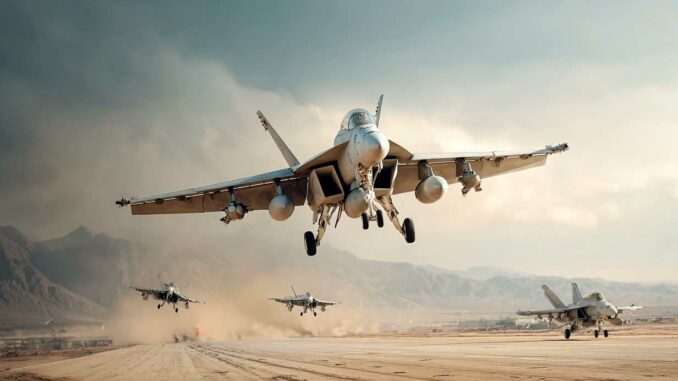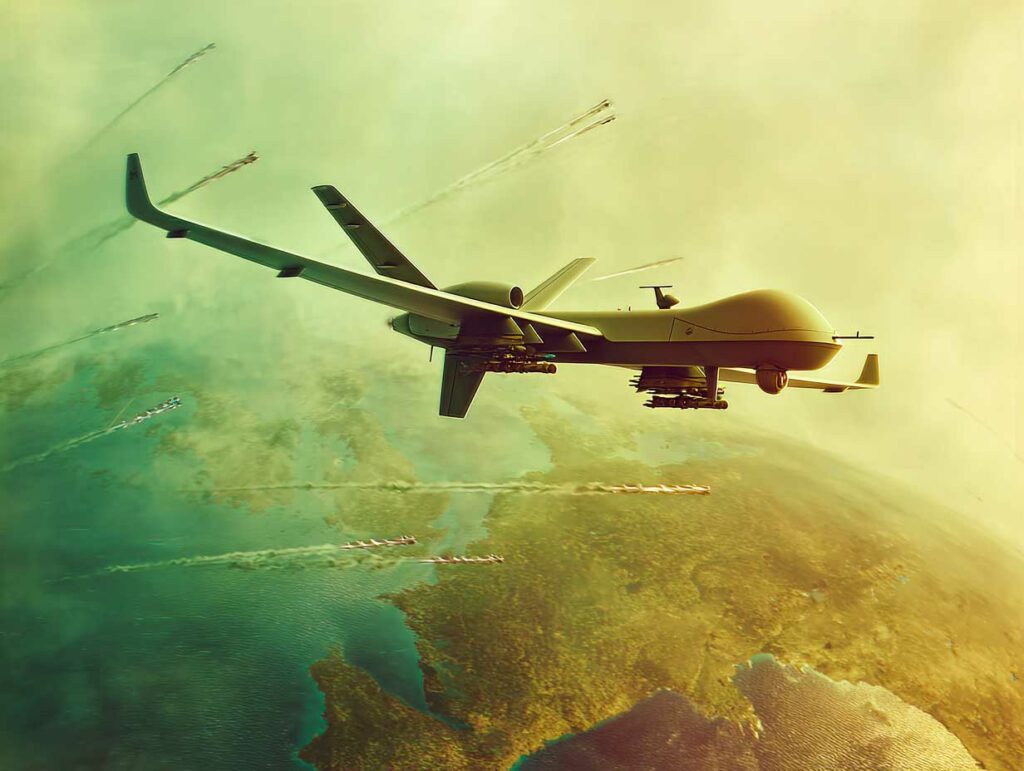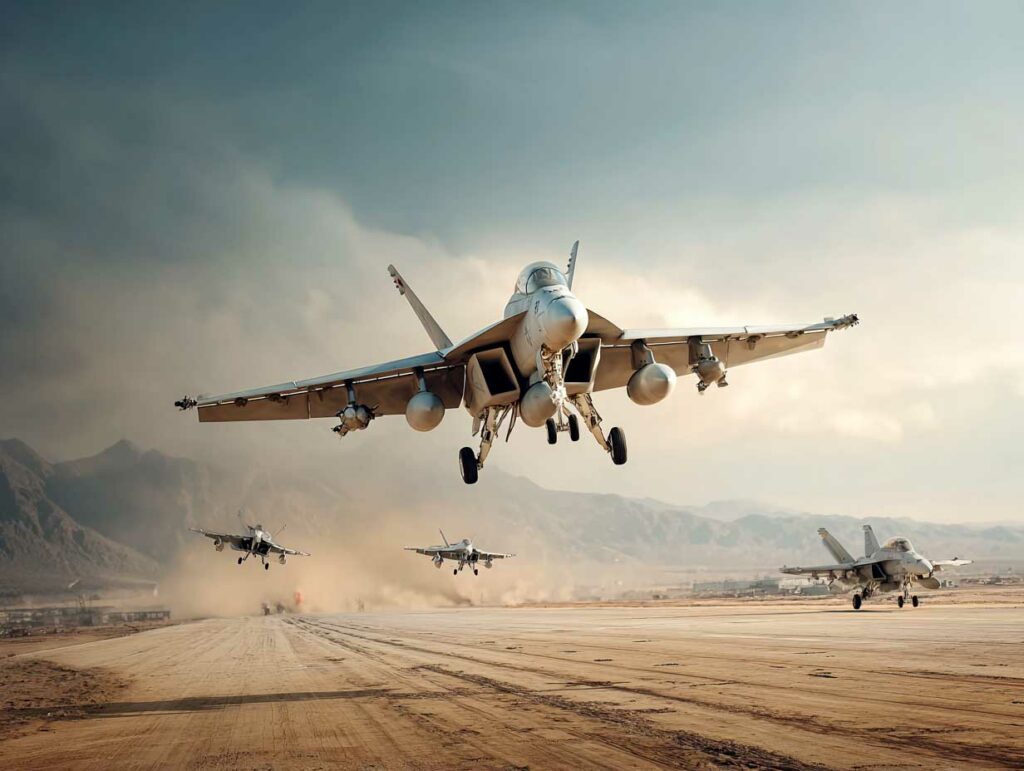
Fighter jets, missiles, and drones: a detailed assessment of the costs, threats, capabilities, and future of air superiority.
In a rapidly changing global conflict environment, the question arises: is it still relevant to continue investing billions in fighter jets? The development of hypersonic missiles and drones, particularly those equipped with artificial intelligence, is changing the dynamics of combat. Analysts believe that future operations will rely heavily on drone saturation and long-range precision strikes. Yet sixth-generation fighter programs, such as the NGAD and SCAF, are continuing with colossal budgets. It is worth examining the specific missions that only piloted aircraft can perform. Areas such as air superiority, penetration of highly defended areas, electronic warfare, and system interconnection remain crucial. This article explores performance, costs, associated systems (missiles, wingman drones), and changing military doctrines to determine whether the astronomical costs are still justified. We limit vague assertions and focus on figures, tactical diagrams, and emerging technologies. The tone remains neutral, professional, and technical to inform decision-makers and specialists. The objective is to identify areas where aircraft continue to provide real added value, or not.
The piloted fighter: irreplaceable missions in a contested environment
Despite the rise of drones and missiles, piloted fighter aircraft retain strategic functions that neither automation nor robotization can fully fulfill. The US Air Force’s NGAD (Next Generation Air Dominance) program is proof of this. With a budget of $16 billion (approximately €15 billion) over the next five years, it aims to develop a 6th generation manned platform interconnected with a network of collaborative drones and advanced sensors. The announced unit cost exceeds $360 million (€335 million), more than twice the price of an F-35A. Boeing is working on a prototype fighter, designated F-47, equipped with a NGAP (Next Generation Adaptive Propulsion) engine that is expected to double the range of the F-22.
The functions assigned to these piloted aircraft are specific. First, air superiority: a piloted fighter jet can engage in complex air-to-air combat with a freedom of decision that cannot be matched by a drone in real time, particularly in environments saturated with signals or jamming. Second, penetration into A2/AD zones: Russian (S-400, S-500) and Chinese (HQ-9) anti-aircraft systems require active stealth capabilities, on-board electronic warfare, and changes of course or mission in flight. Only a pilot can instantly weigh up the trade-off between range, risk, and objective.
Finally, tactical flexibility remains a uniquely human characteristic: identifying an opportunity target, changing an ISR mission to a SEAD mission, or avoiding collateral damage based on split-second decisions. The aircraft becomes an advanced decision center, capable of coordinating wingman drones, integrating satellite, naval, and ground data streams, and serving as a node in the combat cloud, as envisaged by the SCAF (Europe) and NGAD (United States) programs.
This role also implies human responsibility in the use of lethal force. In the United States, the Department of Defense has imposed a rule since 2012: all decisions to fire must be validated by a human. Combat drones, even armed ones, cannot engage a target without human confirmation. In the international ethical and legal context, this makes the pilot not just an operator, but an irreplaceable decision-maker in high-intensity warfare scenarios.

Missiles and drones: saturation, autonomy, and cost-effectiveness
Recent wars—in Ukraine, Nagorno-Karabakh, and Yemen—have confirmed the effectiveness of drones and missiles in neutralizing defense systems without direct human involvement. The Ukrainian conflict, in particular, has highlighted the massive use of disposable drones such as the Iranian Shahed-136, costing between $20,000 and $40,000 each, used to saturate Ukrainian defenses. Their objective: to exhaust anti-aircraft batteries before the arrival of more accurate missiles such as the Kh-101 or Iskander.
This model is inspiring Western industry. MBDA presented a long-range attack drone, OWE (One Way Effector), at the Paris Air Show, capable of being produced at a rate of more than 1,000 units per month, with a reduced payload but swarm coordination. They are used to precede fighter jets in order to saturate radars and ground-to-air defenses (SAM). This doctrine, known as “attritable-first”, aims to save costly manned platforms while maximizing short-term tactical effect.
Modern cruise missiles (SCALP, Storm Shadow, JASSM-ER, Kalibr) have ranges of 500 to 2,000 km, with an accuracy of less than 5 m. Their unit price ranges from $850,000 to $2 million, significantly less than the cost of a modern aircraft. Flying at very low altitudes and using stealth penetration profiles, these missiles can destroy a mobile radar or a hardened bunker without exposing any pilots.
As for wingman drones, such as the Australian Ghost Bat or the Fury developed by Anduril for the United States, they serve as force multipliers. Semi-autonomous, they can carry missiles, jam radars or serve as decoys, while remaining linked to an NGAD fighter. The target price for these drones is less than half that of a manned aircraft, or between €40 and €80 million. The US Air Force plans to use several per fighter.
Finally, the arrival of directed energy weapons is revolutionizing the cost/efficiency ratio. The Iron Beam system developed by Rafael costs a few tens of euros per shot, compared to several thousand for a Patriot-type surface-to-air missile. A 100 kW laser battery can destroy drones at short range, enabling low-cost defense of strategic sites against waves of low-cost drones.
Missiles and drones offer flexible, scalable, and budget-friendly strike capabilities. They are ideal for first-wave and saturation missions, or in situations where the risks are considered too high to deploy fighter jets. However, their effectiveness still depends largely on tactical coordination and partial or total human control, making them complementary rather than absolute replacements.
Economic and strategic comparison: aircraft vs. missile/drone
| Criterion | Fighter jet | Missile/drone |
|---|---|---|
| Unit cost | $100–400 million, life cycle $2 billion (F-35) ([opex360.com][10]) | $5,000–$10 million depending on capacity (Ukraine vs MBDA) |
| Program budget | NGAD $18 billion over 5 years, F-47 $20 billion for engineering | OWE drone: mass production, budget undisclosed |
| Objectives | complete control of the sky, tactical flexibility, human control | saturation, destruction of fixed or mobile targets, disabling of defense systems |
| Limitations | high costs, limited availability, logistical dependence | limited autonomy, vulnerability to electronic warfare, precise targeting often necessary |
In summary, missiles and drones offer better value for money for strike or saturation missions. However, aircraft remain unique for complex missions. The argument is therefore not to abandon aircraft, but to favor a mix of resources.

Towards an integrated doctrine: aircraft + drones + missiles + cyber
Modern armies no longer design their air platforms as isolated systems. The doctrine is now evolving towards an interconnected architecture, often referred to as a “system of systems”, where the piloted fighter aircraft acts as a tactical nerve center. This model is based on the real-time fusion of data from wingman drones, long-range missiles, satellite sensors, ground-based radars and, in the medium term, embedded cyber defense systems.
The NGAD program (United States) embodies this shift. It will include a group of collaborative autonomous drones surrounding a highly stealthy manned fighter. These drones can be configured for specific missions: electronic warfare, reconnaissance, attack, and radar jamming. The goal is to reduce the risk to the pilot while increasing overall lethality. The announced cost of an NGAD drone is around $40 to $80 million, or about one-third to one-half the cost of a manned aircraft. This distribution allows for tactical scalability: adapting the composition of the group according to the mission, threats, and objectives.
In Europe, the SCAF (Future Air Combat System) program brings together Dassault Aviation, Airbus, and Indra. It is based on three pillars:
- the NGF (New Generation Fighter), a piloted aircraft;
- Remote Carriers, drones for offensive or defensive use;
- a combat cloud, a secure tactical data sharing network.
The Rafale F5, expected in 2030, is a transitional milestone. It will incorporate a new ASN4G hypersonic missile (with an estimated range of over 1,000 km) and will be able to direct SEAD (Suppression of Enemy Air Defenses) drones.
Artificial intelligence plays a central role in this transformation. It enables decentralized management of the air battlefield: a drone will be able to reconfigure its trajectory in response to a change in threat, while on-board AI will be able to prioritize targets according to their nature (radar, armored vehicle, command center). However, in accordance with current doctrinal frameworks—DOD-3000.09 in the United States, French doctrine, and NATO guidelines—the final decision to open fire remains human. This requirement, justified by ethical and legal principles, means that piloted fighter jets remain essential for validating strikes, particularly in ambiguous or civilian contexts.
This integrated model is not an abstract vision. It is already being tested, notably with the US Air Force’s Skyborg program and the Australian Ghost Bat experiments. The approach aims to optimize the effectiveness/cost/risk ratio by leveraging the diversity of platforms. Ultimately, high-intensity conflicts will be fought by swarms of drones, supported by piloted aircraft acting as pack leaders, and linked to a cyber and space network capable of managing simultaneous multi-domain operations.
In this context, fighter jets are not competing with drones or missiles, but rather becoming their central tactical interface. The real breakthrough is therefore not technological but organizational and doctrinal. It depends on the ability of armed forces to effectively integrate these components, ensure their interoperability, and maintain human tactical initiative in an environment saturated with AI, jamming, and disinformation.
Fighter jets retain strategic utility in highly contested environments, where air superiority, flexibility, electronic warfare, and human control are decisive. However, their cost remains prohibitive. Autonomous missiles and drones offer strike efficiency at a lower cost, particularly suited to saturation or one-off missions. The future of air superiority therefore does not lie in an exclusive choice but in an integrated tactical architecture: aircraft, wingman drones, missiles, sensors, and cyber. This approach guarantees long-term control of the skies, partially justifying massive investments, provided that development cycles, modularity, and interoperability are optimized. The real challenge will be budgetary: maintaining these programs in a global market under pressure, as demonstrated by the questioning of the PANG, SCAF, and NGAD in the face of political and financial trade-offs.
War Wings Daily is an independant magazine.